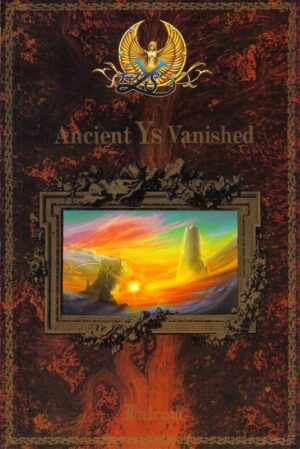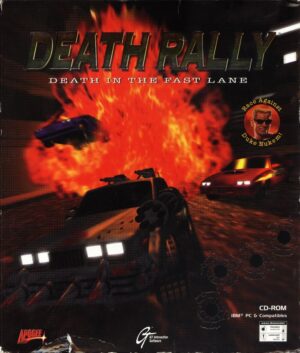Retro Replay Review
Gameplay
Might and Magic: Millennium Edition delivers a sprawling RPG experience by bundling several classic entries in the series. The core gameplay remains faithful to the first-person, party-based exploration that defined the early Might and Magic titles. Players assemble a team of six adventurers, selecting from varied classes and races, and then delve into interconnected worlds filled with monsters, dungeons, and secrets. The turn-based movement and combat system offers a methodical, strategic feel, rewarding careful planning and smart party builds.
(HEY YOU!! We hope you enjoy! We try not to run ads. So basically, this is a very expensive hobby running this site. Please consider joining us for updates, forums, and more. Network w/ us to make some cash or friends while retro gaming, and you can win some free retro games for posting. Okay, carry on 👍)
One of the standout features of this compilation is the seamless integration of Clouds of Xeen and Darkside of Xeen into World of Xeen, allowing for continuous exploration across both episodes. Rather than juggling two separate game files, you wander from one land to the other without loading screens, uncovering side quests that only make sense if you’ve played both halves. Swords of Xeen further enriches the experience with its own unique maps, quests, and characters, though its quality can feel uneven compared to the official titles. Nonetheless, it’s a welcome bonus for completionists.
The transition to Might and Magic VI and VII shifts the gameplay dynamic: these later entries introduce free-roaming 3D environments, a point-buy character system, and a broader open world that’s more in line with late ’90s RPG sensibilities. Combat remains turn-based but takes place on a tiled 3D field, offering a fresher perspective. Both volumes maintain the series’ trademark depth—character skills, spells, and equipment interact in satisfying ways—though they also raise the complexity bar significantly, demanding patience from newcomers.
All game manuals and hint books are included as PDFs, a thoughtful touch for modern players. While some may miss the tactile feel of paper guides, having searchable digital manuals can speed up reference checks, spell lists, and maps. It’s especially useful in a compilation where each title comes with its own lore and mechanics. However, the reliance on external PDFs does mean alt-tabbing out of the game to look up a puzzle solution or monster weakness, which can break immersion.
For those in Europe, note that the Millennium Edition release is trimmed: you only get Darkside of Xeen alongside Might and Magic VI and VII. While this reduces the overall playtime, the remaining titles still offer dozens—if not hundreds—of hours of content. If you’re hoping for the full Xeen trilogy experience, you may need to seek out a different regional edition or additional sources.
Graphics
Visually, Millennium Edition is a time capsule of evolving mid-’90s PC graphics. Clouds of Xeen and Darkside of Xeen employ EGA-style pixel art with a limited palette, but they manage to evoke distinct atmospheres—icy peaks, lush forests, haunted keeps—with simple yet evocative designs. The sprite work for monsters and NPCs is charming, if blocky, and the hand-drawn title screens and cutscene art carry a nostalgic appeal that resonates with retro RPG fans.
By the time you reach Might and Magic VI, the series transitions into a pseudo-3D engine with VGA graphics and a broader 256-color palette. This upgrade brings richer textures to dungeon walls and more detailed character portraits. The world feels more alive, with ambient animations like flickering torches, moving water, and dynamic lighting effects. These touches enhance immersion, although the fixed-angle view can sometimes make navigation awkward in tight corridors.
Might and Magic VII builds further upon VI’s foundation, featuring slightly sharper sprites and improved environmental effects. Color grading shifts toward warmer tones in certain regions, making towns and settlements feel cozy against the darker dungeons. Character equipment renders more clearly, so you can instantly tell if you’ve acquired that coveted enchanted helmet or shiny new sword. Despite these improvements, both games exhibit occasional texture repetition and performance hiccups on modern hardware, which community patches often address.
While the graphics won’t impress by today’s standards, part of the compilation’s charm lies in its authenticity. The pixel art and early 3D visuals capture a pivotal era in RPG history, showcasing how developers transitioned from pure sprite-based worlds to more immersive 3D environments. For enthusiasts of retro aesthetics, the slight roughness feels intentional rather than dated.
Lastly, the inclusion of high-resolution PDF manuals means you can admire the original box art and lore illustrations even if the in-game visuals are limited. Those full-page drawings of dragons, wizards, and battle scenes add another layer of appreciation for the artistry that accompanied these releases.
Story
The narrative tapestry of Millennium Edition spans multiple continents and plotlines. In World of Xeen, you begin by exploring the peaceful Clouds of Xeen, only to discover portals leading to Darkside, where an ominous force threatens both realms. Uniting these episodes reveals an overarching plot: the transformation of a once-idyllic land into a dark mirror, and the complex interplay between two rulers locked in a cosmic struggle. The story unfolds at a measured pace, encouraging thorough exploration and quest completion to piece together hidden secrets.
Swords of Xeen introduces a standalone storyline that weaves in familiar characters and rivalries. While its writing may not match the polish of the official titles, it offers a playful take on the Xeen mythos, with humorous NPC banter and creative puzzle design. For die-hard fans, it’s a delightful detour, though newcomers might find the narrative less cohesive than the core episodes.
With Might and Magic VI: The Mandate of Heaven, the scope expands dramatically. You’re thrust into the world of Enroth, where political machinations, ancient deities, and heroic destinies intersect. The plot kicks off with a royal assassination and quickly branches into multiple questlines, from rescuing kidnapped nobles to thwarting demonic invasions. Dialogue is sparse but purposeful, and the world brims with lore found in journals, inscriptions, and NPC exchanges.
Might and Magic VII continues this tradition but leans harder into faction conflicts and moral ambiguity. Choices carry weight, whether you align with a secretive mage brotherhood or uphold the law as a knight of the realm. The writing quality sees incremental improvement, delivering memorable NPCs whose stories evoke genuine empathy. Side quests range from the mundane—retrieving lost heirlooms—to the epic—reopening a sealed portal to a forbidden plane.
Across all titles, the series balances linear goal-driven chapters with open-ended exploration. While some narratives feel dated or rely on RPG tropes, the overarching sense of adventure and the thrill of uncovering hidden lore remain deeply satisfying. For players who relish piecing together a multi-chapter saga, Millennium Edition’s storytelling delivers both depth and variety.
Overall Experience
Might and Magic: Millennium Edition stands as a robust value proposition for fans of classic RPGs. By packaging five major entries (six in non-European releases) alongside comprehensive PDF manuals and hint books, it caters to both newcomers seeking a deep dive and veterans craving nostalgia. The sheer volume of content—spanning turn-based dungeon crawling, open-world exploration, and layered storytelling—can occupy hundreds of hours, ensuring that adventurers get their money’s worth.
Setup on modern systems may require a bit of tinkering, especially to run the older EGA titles at the correct speed or to apply community patches for VI/VII. However, the active fan community has produced installers and compatibility fixes that simplify the process. Once configured, the smooth transition between games and the unified launcher make jumping from Xeen to Enroth and beyond a breeze.
The compilation’s fidelity to the originals is both a strength and a potential hurdle. Players accustomed to quality-of-life features in contemporary RPGs—quick saves, fast travel, quest journals—may find the archaic mechanics challenging. Still, those seeking an unfiltered glimpse into the roots of Western CRPGs will appreciate the series’ uncompromising design.
For European buyers, the reduced lineup still offers two full-length adventures in Enroth and the dark intrigue of Darkside of Xeen. While missing Clouds of Xeen and Swords of Xeen limits the total experience, the remaining titles maintain high replay value, especially when trading gear, experimenting with new party compositions, or tackling optional dungeons.
Ultimately, Might and Magic: Millennium Edition is a testament to a beloved franchise’s evolution. Its strengths lie in expansive worlds, intricate party dynamics, and the delight of discovering hidden corners of a vast fantasy universe. Though it presents a steep learning curve and visuals that demand patience, the sense of accomplishment from triumphing over its challenges remains unmatched. For RPG aficionados seeking a comprehensive retrospective of Might and Magic’s golden era, this collection remains a must-have.
 Retro Replay Retro Replay gaming reviews, news, emulation, geek stuff and more!
Retro Replay Retro Replay gaming reviews, news, emulation, geek stuff and more!




Reviews
There are no reviews yet.